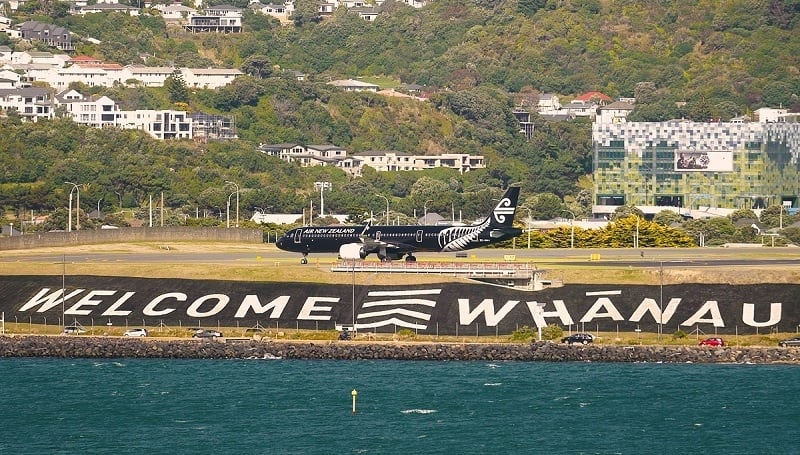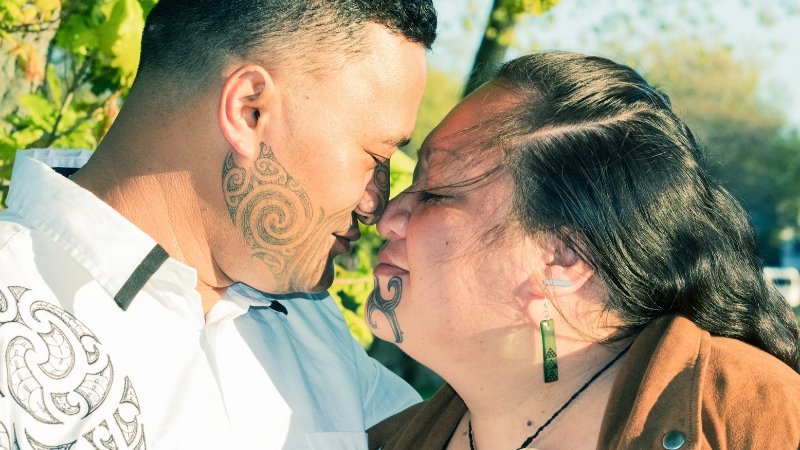As the trans-Tasman bubble opened earlier this month, the world witnessed one of the most touching COVID-19 reunions to date. Painted in bold, white letters across Wellington Airport’s runway, a sign that read “Welcome Whānau” was the simple yet heartwarming spectacle that made waves on social media — and even earned a spot on New Zealand Prime Minister Jacinda Ardern’s Facebook page.

There are many useful Māori phrases and basic greetings we’ll learn today, but whānau is a Māori word that speaks of love and home. In English, it means family. | Image credit: Tourism New Zealand Official Facebook Page
Whānau is the Māori word for “family”, and that alone strongly embodied the warm welcome that New Zealanders prepared for their Australian neighbours. Paired with reunion photos that surfaced online, New Zealand inspired weary souls all over and gave stranded travellers the dose of hope they needed amid prevailing global lockdowns.
Also read: New Zealand Finally Welcomes Back Their Australian Neighbours!
Now that New Zealand and Australia are inching closer to a ‘new normalcy’, we figured it’s the best time to prepare for our future trips to New Zealand from home. Let’s start with a few useful Māori phrases and basic greetings, shall we? But first, a few interesting trivia to pique your interest even more!
Fun facts about Māori

The traditional Māori hongi or ceremonial touching of noses. | Image credit: MollyNZ via Canva Pro
Māori, the people and the language
The Māori are the indigenous people of New Zealand or, as the Māori’s call their motherland, Aoetoera. Their mother tongue, which is one of the three official languages of New Zealand, is also called Māori (or Te Reo Māori; in English, te reo means “the language”). The other two are English and New Zealand Sign Language, in case you were curious.
Although it’s considered a cultural treasure, Māori is now only spoken by about 4% of New Zealand’s total population. That said, the country has launched educational, cultural, and tourism programs that aim to protect and promote all facets of Māori.
Some Māori tribes welcome visiting tribes with offerings & haka
There are several Māori tribes across New Zealand — each with their own versions of their general customs, beliefs, traditions. But one that is common among all tribes is the haka, a ceremonial dance performed usually by the tribes’ warriors.
While the haka was commonly done before battle as a show of strength and solidarity among tribesmen, it is also performed in times of peace. When tribes meet, a haka is equivalent to a warm welcome that pays its respect to tribe members. At weddings and other social gatherings, the haka symbolises reverence, trust, and mutual respect.
In some Māori tribes, visiting tribes were traditionally offered a symbolic gift upon arrival; if the gift is accepted, then that meant the unexpected guests came in peace. Think a welcome gift, only done in true Māori fashion, which often meant an elaborate and meaningful ceremony before tribe leaders.
Māori men took great pride in caring for their tribe’s female members
Māori men did not only defend their tribes from potential threats. They were also known to look out for their female tribe members with great care. Bianca Ransom, founder of and award-winning Māori-centric travel agency called Potiki Adventures, offered a glimpse into this fascinating dynamic during her 2015 TEDx Talk.
Ransom recounts the day she learned that traditionally, Māori women were not allowed to step into the ocean while menstruating. During this time, it was the Māori men’s role to carry women to land from the sea, should they be travelling. Māori men would treat this belief (and the women) with utmost respect, that not a single toe would ever touch the ocean’s waters.
Māori, in general, have a strong affinity with the natural world
The Māori deeply roots their notions of respect and reverence to mana, a concept that revolves around equality. Because of individual mana, everyone is equal. Mana, in a way, is knowing who you truly are by knowing what makes you you. These qualities always find a way to focus on your role in relation to the natural world — something that Māori deem sacred.
The hongi, a traditional Māori greeting
Perhaps what paints a clearer picture of how truly warm and affectionate Māori are is the hongi, a traditional Māori greeting that lets two people lightly touch each other’s noses and foreheads. While we can try to describe exactly how the haka and the hongi go hand in hand when welcoming honoured guests, we suggest watching this video that shows Prince Harry and Meghan Markle being treated to an authentic Māori welcome.
Basic Māori greetings & useful Māori phrases

Image credit: MGillingham via Canva Pro
Speaking of a warm Māori welcome, don’t you think it’s a good idea to learn a few basic Māori greetings and useful Māori phrases for your next trip to New Zealand? Here are a few that will surely make locals smile from ear to ear!
1. Kia ora
[kee-yoh-rah]
This is the most common (and easiest) way of saying hello! When you greet someone “Kia ora!”, you’re also wishing them well. Interestingly enough, this is also a way of saying, “Thank you!”
2. Tēnā koe
[teh-nah-ko-eh]
In English: “Hello,” but more formal. Usually uttered directly to just one other person.
3. Tēnā koutou katoa
[teh-nah kaw-taw kah-toh-wah]
In English: “Hello, everyone”. This is usually said to three or more people.
4. Ka kite anō
[kah kee-teh ah-noh]
In English: “See you later!” It’s a casual way of saying, “Til we meet again.”
5. Haere rā
[hi-ree rah]
In English: “Goodbye!”
6. Kei te pēhea koe?
[kei teh pi-yah koi]
In English, “How are you doing?” or “How’s it going?” It’s a nice way to break the ice.
7. Kei te pai
[kei teh pie]
The usual answer to “Kei te pēhea koe?” It means “Good!”
8. Tino pai
[tee-noh pie]
This is what you say if you’re asked “Kei te pēhea koe?” and are feeling “very good.”
9. Morena
[moh-reh-nah]
In English: “Good morning.” Another way of saying this is, “Ata mārie [ah-tah mah-ree-yeh].”
10. Ahiai mārie
[ah-hee-yah-eeh mah-ree-yeh]
In English: “Good afternoon.”
11. Pō mārie
[poh mah-ree-yeh]
A more modern, casual way of saying, “Good evening.”
12. Harikoa
[hah-ree-koh-ah]
In English: “Cheers!” It’s another way of saying, “Be happy.”
13. Kia mākona
[kee-yah mah-koh-nah]
The Māori equivalent of the French expression, “Bon appétit!” That means “eat well” or “happy eating,” so it is said before digging into a hearty meal.
14. Ko (your name here) ahau
[koh (your name here) ah-hoh]
This literally means, “I am (your name here)”. For example: If I would like to introduce myself to a Māori speaker, I would say, “Ko Alyosha ahau.”
15. Haere Mai
[hi-reh-mai]
In English: “Welcome!” If you see this on any sign in Aoetoera, that simply means that they’re inviting you to enter.
So, how about it? Can you picture yourself in New Zealand yet? Try saying these basic Māori greetings and useful Māori phrases at home! Have any favourite Māori phrases to share? Let us know in the comments section. Good luck and kia ora!





